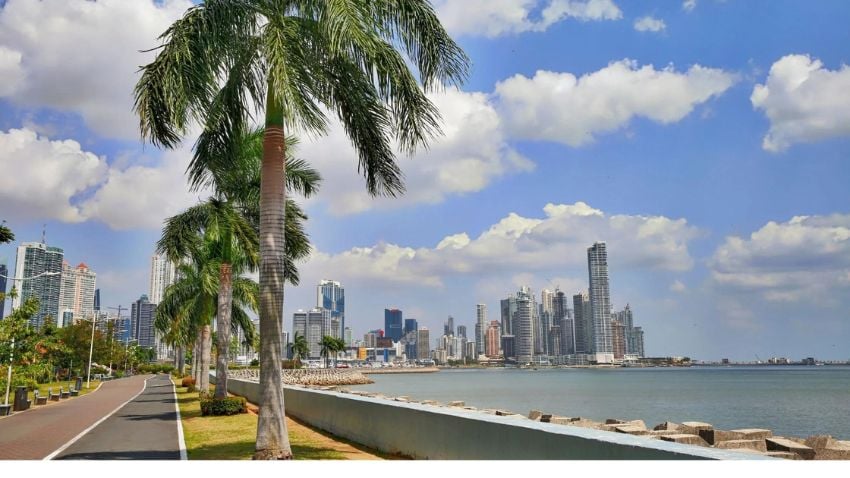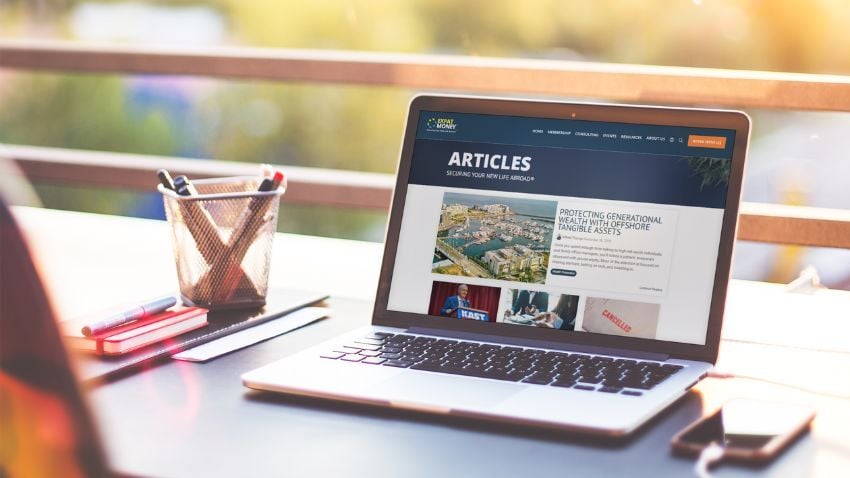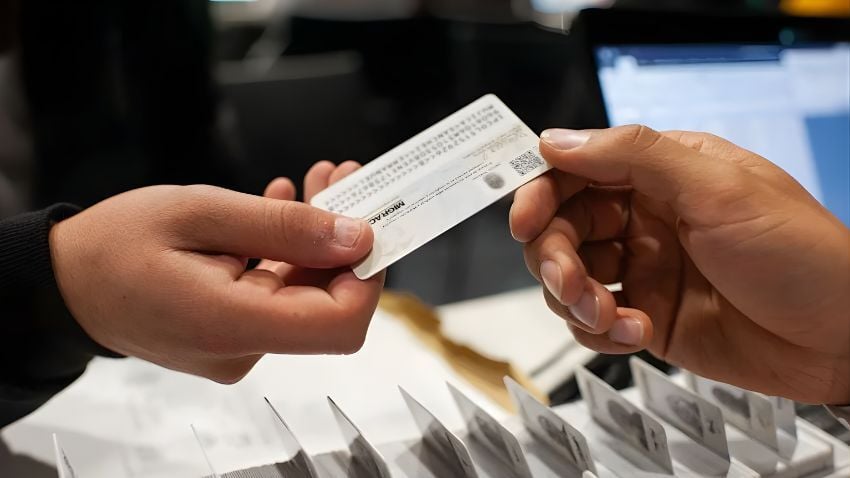The Different Types Of Residency You Need To Know
People choose the expat lifestyle for many reasons. Some seek greater personal freedom and better financial opportunities, while others want a lower...

8 min read
Panama is an amazing country. There is so much to see and do, whether you live here full-time or are coming on vacation. With the Pacific Ocean on one side, the Caribbean on the other, and the mountains in between, you can see it all here in Panama. So you can already prepare for a tropical vacation.
Panama, a country that effortlessly blends culture, adventure, and natural beauty, offers a plethora of things to do and see. Whether you're exploring the bustling Panama City or venturing into the heart of its lush rainforests, there's something for everyone to enjoy.
Immerse yourself in Panama's rich cultural heritage by attending traditional festivals, visiting indigenous communities, and exploring local markets. Take a day trip to El Valle de Antón, a picturesque mountain town known for its thermal springs, artisan markets, and the famous square tree. Interact with friendly Panamanians who are known for their warm hospitality. Engage with locals to learn about their traditions and way of life. Panama's climate is tropical, making it a year-round destination. However, plan your visit during the dry season (December to April) for the most comfortable weather.
Combine the best of both worlds by staying in eco-lodges nestled between the beach and the rainforest. Enjoy the tranquillity of the rainforest while being just steps away from the beach.
In this article, we will touch on a few of my favourite locations that I've experienced in my three years in Panama.
A visit to Panama wouldn't be complete without witnessing the marvel of the Panama Canal. Marvel at the massive ships passing through this engineering wonder, or take a tour to learn about its history and operation.
The Panama Canal is an incredible feat of modern engineering. People had long dreamed of connecting the Atlantic and the Pacific Oceans via a canal through Panama. One of the most illustrious figures in history, Thomas Jefferson, suggested in 1788 that the Spanish should construct a canal in what is today modern-day Panama, although his advice fell on deaf ears.
During the late 19th century, the French tried to construct a canal in Panama (at that time owned by Colombia), but yellow fever and malaria led to tens of thousands of deaths, and the effort ultimately went bankrupt. It was something very tragic to occur.
In 1904, following the secession of Panama from Colombia, the United States took over the construction of the Canal and finished it in 1914. It takes about ten hours for a ship to pass through the Panama Canal and cuts off ten days' worth of travel time versus circumnavigating South America.
.jpg?width=2240&name=Panama%20(6).jpg)
Locks of the Canal in Panama
The canal is a marvel to watch. At the Miraflores Locks near the Bridge of Americas, you can watch ships come and go through the locks daily. The canal locks at each end lift ships up to Gatun Lake, an artificial lake created to reduce the amount of excavation work required for the canal, up 85 ft above sea level, and then lower the ships at the other end.
There is also a museum at the Miraflores Visitor Center that explains everything you would ever want to know about how the canal was built, how it works, and why it is so important to Panama. They are open daily from 8:00 am to 6:00 pm. Locals and resident prices are from $1.50 (senior) to $3.00. If you are a non-resident, the price is still very affordable, from $5.00 (senior) to $10.00.
If you want to see a ship coming in, I would suggest either early in the morning or later in the afternoon. It is not a guarantee, but your chances are considerably higher at those times. Seeing a ship moving through the Panama Canal is something that will stay in your mind through time.
Discover Panama's history and culture at the Biomuseo in Panama City. This colourful museum, designed by Frank Gehry, showcases the country's unique biodiversity.
In Casco Viejo, you can also visit the Panama Canal Museum from Wednesday to Sunday, 10:00 am - 6:00 pm. It is located across from the Town Square of Casco Antiguo.
Related article: The Basics Of How To Get A Second Passport Or A Second Residency
After seeing the wonders of the man-made world with the Panama Canal, take a hike through Soberania National Park, located nearby.
Stretching over 55,000 acres of virgin rainforest, Soberania National Park is home to countless forms of exotic wildlife, including howler monkeys, three-toed sloths, and green iguanas. With a vast jungle to be explored.
There are plenty of hiking trails for you to enjoy, and bird watchers can marvel at the hundreds of different bird species that call Soberania home.
Just mind wearing comfortable shoes. And while you are hiking around, make sure to stop at the Panama Rainforest Discovery Center, where you can soak in some breathtaking views from the thirty-two-meter-high observation tower or rent some binoculars for some serious bird watching.
.jpg?width=2240&name=Panama%20(3).jpg)
Panama Viejo Ruins, Panama City
Between the noise of the city and the quietness that can be found in Costa del Este, you will find the remnants of the first city built in Panama, referred to as Panama Viejo. Everyone knows where to take you if you are hailing an Uber or Taxi. The prices are extremely reasonable to enter, and you will board a small covered trolley and be taken to the museum where you can view Panama as it was 500 years ago when it was the first permanent European settlement on the Pacific Ocean.
Then take your time and wander the grounds, walk up the stairs and see Panama Bay and the city from what remaining archeological buildings are left behind.
Casco Antiguo, or “the old quarter,” is a historic section of Panama city that dates back to the 17th century. After the fall of Panama Viejo, Casco was built on a new site, and here you can see the original buildings as they stood almost 500 years ago.
Designated as a World Heritage Site in 1997, Casco Antiguo is a wonderful place to spend an afternoon, casually strolling the streets and sampling the local cuisine. You can check out some historical sights, like the Church of San Jose, with its ornate Golden Altar and intricate stained glass windows. Or check out one of the several museums in the region, such as the “Museo de la Mola,” dedicated to the Mola art of the Guna people.
There is a small beach here, but not really suitable for swimming. You can see the ships as they enter the Panama Canal, and on most days, there is a lineup of ships waiting their turn to enter the 12-hour voyage to the Atlantic Ocean.
Very few countries have more restaurants than Panama City. Everywhere you turn, you will find foodery. Panama has everything, whether it be street fare, mom-and-pop diners, or high-end cuisine. Panama has it all.
Explore the vibrant capital city, Panama City, where modern skyscrapers and historic neighborhoods coexist. Don't miss the historic Casco Viejo district, known for its colonial architecture, restaurants, and cultural sites. Panama City offers a diverse culinary scene. Savour delicious seafood, traditional Panamanian dishes, and international cuisines at the city's many restaurants.
They also have every type of food imaginable. Japanese, Chinese, Indian, and of course, the local food, Panamanian.
Even in the malls, their restaurants are exceptional. Yes, you’ll find Chuckee Cheese and Mcdonalds in the food court, but you’ll also find every high-end store you can possibly think of.
.jpg?width=2240&name=Panama%20(4).jpg)
Casco Viejo, Panama
The Amador Causeway is one of my favourite locations to drive leisurely on a Sunday morning.
Once you’ve had a day in Casco Viejo, continue your journey out into the Pacific Ocean, where the causeway joins small islands, Naos, Perico, Culebra and Flamenco.
Built in 1913 with rocks from the excavation of the Panama Canal, the promenade has become one of the most popular and visited places in Panama.
You can walk it, run it or rent 4-seater bicycles for the entire family to enjoy. With water on either side, it’s a wonderful place to have lunch or dinner or to watch the ships get ready to enter the Panama Canal.
There are many amazing restaurants, including Beirut’s, which is just lovely to sit and view the water and the boats.
Once you’ve seen all the cultures, you may want to try your hand with lady luck at one of Panama’s many casinos.
Sortis Casino stands an impressive twenty-two stories high, and is a monument to luxuriant living at its finest, with a full-service spa, poolside bar and lounge, and comfortable ultra-modern rooms. And of course, they have a full-sized casino with blackjack, roulette, slot machines, and even a modern poker room.
Aside from Sortis, there are plenty of other gambling halls in Panama City, including StarBay Casino, which occupies the bottom two floors of the Hilton hotel, Majestic casino, Crown Casino International, and many more. One notable casino that no longer exists was the much-beloved Veneto casino, infamous for the friendliness of its patrons.
Located just 15 km off the shores of Panama City lies the lovely Taboga Island. For just $24, you can hitch a ride on the Taboga Express and arrive in just 30 minutes from the Amador Causeway. Taboga Island has many beautiful beaches you can enjoy, as well as hiking trails, historic buildings, and cute restaurants and bars.
While on Taboga you can go for a swim under the beautiful blue sky, relax with a pina colada, or enjoy hearty, rustic, Panamanian cuisine. If the strong Panamanian sun gets too much for you, you can rent a beach umbrella and a chair to cool down on some shade, and don’t be afraid to haggle to get the best deal you can.
.jpg?width=2240&name=Panama%20(8).jpg)
Boats in the Harbour, Panama City
Once you’ve made your way through Casco Viejo, then have lunch at Beiruts on the Amador Causeway and buy boat tickets to spend the day on the island of Contadora, part of the Pearl Islands. There are actually over 200 islands that form this archipelago, but Contadora is the most visited.
Panama boasts a coastline dotted with stunning beaches, and beach lovers will find their slice of paradise. You can rent a cottage for the weekend, swim on one of the many beaches, or rent a boat to go spearfishing. You can also see the whales when they are passing through, usually from August through September of each year.
Contadora is about 30 miles (90 minutes) from Panama City, and you leave from Amador Causeway. Tickets are about $80 for a round trip; you can pack a day (or a weekend) worth of food and beverages to enjoy the blue sky, sun, and sand.
.jpg?width=2240&name=Panama%20(5).jpg)
You can snorkelling on the amazing beaches in Panama most time of the year
If you’re visiting Panama for more than one week, I would recommend making your way to Boquete. It is a small town located about 37 miles (60 kilometres) from the border with Costa Rica and lies on the Caldera River.
Its elevation is 3,900 ft (1,200 metres) above sea level, and the weather is considerably cooler than the lowlands in Panama City.
Most would consider Boquete more of an expat area, with the last count of over 3,000, the same as Coronado on the beaches of the Pacific Coast.
Related content: 8 Best Cities For Expats In Panama
Lace up your hiking boots and explore Panama's lush rainforests. Hike the challenging trails of Volcán Barú or opt for the more accessible Pipeline Road in Soberania National Park. You can climb to the summit of the Baru Volcano (and even camp there overnight and take in a breathtaking sunset) or take a stroll through one of the many hiking trails stemming from the town of Boquete.
Baru Volcano National Park is located in the Chiriqui province of Panama, about 500 km (as a person drives, not as the crow flies) west of Panama City. If you’re in a hurry, you can fly from Panama City to David, which is only 40 km away from Boquete. Or, if you want to take the scenic route, then bus service regularly leaves Panama City to David and from David to Boquete.
Technically, Volcan Baru is a potentially active volcano, but don’t worry. You probably won’t have to dodge any streams of lava while climbing up the mountain, as the last eruption was around 400 to 500 years ago. On the other hand, don’t be surprised if you run into some exotic wildlife. Volcan Baru is five different ecosystems in one, which attracts a whole host of different critters, including pumas, jaguars, and ocelots (oh my!). While the park isn’t exactly dangerous, you might want to get a guide to accompany you or at least bring along a slow-moving friend.
The beauty of snorkelling in Panama is that you can take advantage of two completely different marine ecosystems: the Caribbean Sea and the mighty Pacific Ocean. Because it is so close to the equator, you can go snorkelling in Panama any time of the year. The waters of the Caribbean are slightly warmer than those of the Pacific Ocean, and you can find some absolutely incredible snorkelling in the archipelago of Bocas del Toro. There, you will witness all manner of exotic aquatic fauna, including a wide variety of starfish, damselfish, vase sponges, moon jelly, the French grunt, doctorfish, and much more. There are also tons of different corals and even some fish predators like the nurse shark.
Aside from snorkelling, there are a lot of other fun activities in Bocas del Toro, like swimming with the dolphins, leisurely relaxing on one of the many incredible beaches, taking one of the many boat tours, going for a hike, and enjoying some of the lively island nightlife.
The majority of us can agree that there is nothing better than going to a nice beach in tropical weather. Panama has everything you can think of. Glorious beaches with a blue sky and sun, you can go to areas with jungles to explore, villages, waterfalls, mountains, festivals, and music. There really is nothing you can't do there. Enjoying sub-tropical and tropical weather in countries like Ecuador, Mexico, and Honduras has never been something without any major risk. However, Panama is also one of the safest Central and South American countries, so there is minimal risk in living and visiting there.
In Panama, you can choose your own adventure, from the iconic Panama Canal to the tranquil beaches, dense rainforests, and the rich tapestry of culture and cuisine. This diverse country offers an unforgettable experience for every traveller.
If you want the best intel from the expat world, including profitable offshore opportunities, little-known tax-saving strategies, and hard-won insights on immigration, passports, and Plan-B residencies, all delivered to your inbox every single week, then join our daily correspondence, EMS Pulse®. Currently enjoyed by over 84,000 expats and expat-hopefuls worldwide. Fill in the form below to join our newsletter free:

Written by Mikkel Thorup
Mikkel Thorup is the world’s most sought-after expat consultant. He focuses on helping high-net-worth private clients to legally mitigate tax liabilities, obtain a second residency and citizenship, and assemble a portfolio of foreign investments including international real estate, timber plantations, agricultural land and other hard-money tangible assets. Mikkel is the Founder and CEO at Expat Money®, a private consulting firm started in 2017. He hosts the popular weekly podcast, the Expat Money Show, and wrote the definitive #1-Best Selling book Expat Secrets - How To Pay Zero Taxes, Live Overseas And Make Giant Piles Of Money, and his second book: Expats Guide On Moving To Mexico.
.jpg)
People choose the expat lifestyle for many reasons. Some seek greater personal freedom and better financial opportunities, while others want a lower...

Every year brings new lessons, opportunities, and milestones worth revisiting. As 2025 comes to a close, we’re taking a moment to reflect on the...

Latin America has become one of the most straightforward regions in the world for securing residency. Most countries in the region offer simple,...